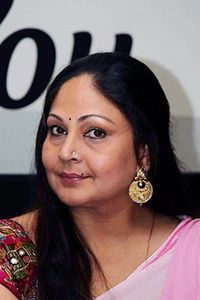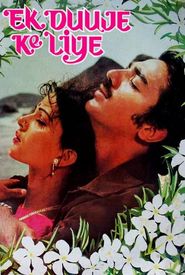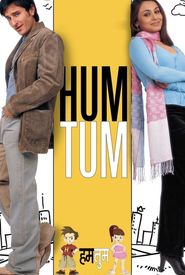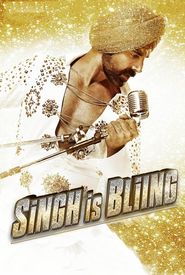Rati Agnihotri, a renowned Indian actress, entered the world on December 10, 1960, in the vibrant city of Bombay, India, where she was born into a traditional Punjabi family. As a member of a close-knit family, Rati was blessed with an older sister and brother, who played a significant role in shaping her early life.
Growing up in a conservative household, one might expect Rati's family to be quite restrictive in their expectations. However, her family's open-mindedness and willingness to adapt allowed Rati to pursue her passion for modeling at a remarkably young age of 10. This opportunity was made possible courtesy of her sister Anita's prestigious Miss Young India title, which served as a catalyst for Rati's early foray into the world of modeling.
Rati's formative years were marked by a significant change in her life, as her father's profession necessitated a relocation to the vibrant city of Madras, Tamil Nadu, when she was still a teenager. This pivotal decision would have a lasting impact on her life, as she would go on to attend the esteemed Good Shepherd's Convent school, where she would hone her skills and develop her passion for the performing arts. In fact, her time at the school would prove to be a fertile ground for her creative expression, as she would take to the stage, acting in a school play that would showcase her talent to a wider audience. Little did she know that her performance would soon attract the attention of none other than Bharati Raja, a renowned Tamil film director, who was on the lookout for a talented heroine to star in his upcoming film. His presence at the school play would prove to be a turning point in her life, as he would not only be impressed by her acting abilities but also see great potential in her. With a promise to complete the film within a month, he would meet with Rati's father, securing his reluctant agreement to let his 16-year-old daughter take on the role. And so, with a mix of excitement and nervousness, Rati would embark on her first film journey, starring in the 1979 Tamil film Pudhiya Varpukal, marking the beginning of a long and illustrious career in the Indian film industry.
Bharati Raja's cinematic masterpiece, which catapulted Rati to an unprecedented level of fame, earned the distinction of being a resounding commercial success, solidifying her status as a household name. In the aftermath of this triumph, Rati found herself thrust into the spotlight, her star rising meteorically as she basked in the glory of her newfound celebrity.
Not one to rest on her laurels, Bharati Raja soon entrusted Rati with the lead role in her sophomore directorial effort, Neeram Maradapukal, released in 1979. This cinematic endeavor served as a testament to the enduring appeal of Rati's talent, as she effortlessly transitioned from one critically acclaimed performance to the next.
In a heartwarming display of cultural assimilation, Rati's Punjabi roots notwithstanding, she was warmly welcomed by the South Indian audience, who proudly claimed her as one of their own. As a token of her appreciation for this warm reception, Rati affectionately referred to herself as a "Tamilian at heart," and affectionately regarded Madras as her "home." This emotional connection to the region was a testament to the profound impact it had on her life and career.
Rati's impressive filmography continued to grow, as she went on to star in a variety of Telugu and Kannada productions, demonstrating her versatility as an actress. Her remarkable work ethic and dedication to her craft resulted in an astonishing 32 film appearances within a mere three-year period, a feat that underscored her unwavering commitment to her art.
Noted for her versatility and extensive experience in the Indian film industry, Rati's illustrious career was marked by collaborations with some of the most prominent names in the business.
She had the privilege of working alongside esteemed thespians such as Kamal Haasan, Rajinikanth, Shobhan Babu, Chiranjeevi, Vishnuvardhan, N.T. Rama Rao, Krishna, and Nageshwara Rao, a testament to her ability to adapt to diverse creative environments.
Rati's entry into the Hindi film scene was facilitated by her strong ties to South Indian cinema, a domain in which she had already established herself as a leading lady opposite Kamal Haasan in numerous films.
Her familiarity with the director K. Balanchander, with whom she had previously worked, and her experience in front of the camera alongside Kamal Haasan, made it a natural progression for her to be approached for the Hindi remake of the Telugu blockbuster Marocharithra (1979),a project that would further solidify her position in the Hindi film industry.
K. Balachander, a renowned director, spearheaded the production of the film, which would later be rechristened "Ek Duje Ke Liye" in 1981. This cinematic masterpiece catapulted the quintet of stars from the South Indian film industry into the spotlight of Hindi cinema, marking a significant milestone in their careers. The esteemed group consisted of Kamal Haasan, a talented hero, Rati Agnihotri, a captivating heroine, Madhavi, a skilled supporting actress, and S.P. Balasubramaniam, a gifted playback singer. As the film's popularity soared, it became the highest-grossing hit of 1981, earning widespread acclaim and recognition. The critical acclaim and commercial success of the film led to nominations for the entire cast at the prestigious Filmfare Awards. While all the stars received recognition, Rati Agnihotri and S.P. Balasubramaniam emerged as the most successful beneficiaries, going on to become top stars in their respective fields.
Rati's father, who was also responsible for overseeing her burgeoning career, took great care to protect her from the overwhelming media frenzy that surrounded her at the tender age of a young girl. In order to shield her from the intense scrutiny, he strategically limited her film appearances to only Hindi productions, following her critically acclaimed role in Ek Duje Ke Liye. This decision allowed her to continue working in the film industry, starring in a staggering number of over 43 Hindi films by the end of the decade. Among her most notable and successful films during this period were Shaukeen, released in 1982, alongside Farz Aur Kanoon, which also premiered in 1982. Additionally, she starred in the 1983 film Coolie and the 1985 film Tawaif, for which she received her second Filmfare nomination as Best Actress, a testament to her remarkable talent and dedication to her craft.
Following the passing of her father, Rati made the pivotal decision to exit the Hindi film industry, despite being at the peak of her career, after tying the knot with entrepreneur and architect Anil Virwani on February 9, 1985. This significant turning point in her life marked the beginning of a new chapter, as she welcomed her son Tanuj in 1987 and dedicated herself to nurturing his growth, as well as exploring other artistic pursuits.
During this period, she focused on supporting her husband's architectural endeavors, utilizing her creative skills to bring his designs to life. Moreover, Rati pursued a degree in Reiki, a holistic healing modality that enables her to channel her energy to alleviate the suffering of others from a distance.
Notwithstanding her decision to retire from the world of cinema, this legendary actress continued to make appearances at film-related events, exuding an aura of elegance and sophistication that left a lasting impression on all who laid eyes on her. As a direct result of her continued allure and captivating presence, the film offers continued to pour in, refusing to cease their pursuit of her talents.
After a remarkable 16-year hiatus, during which she had consistently turned down numerous film roles, she finally relented, motivated by the realization that her son was growing up and she had acquired more time for herself to pursue her passions and interests. Her family, in a display of unwavering support, wholeheartedly endorsed her decision to return to the silver screen.
In her triumphant return to cinema, she played the role of Kajol's glamorous mother in the 2001 film Kuch Khatti Kuch Meethi, a performance that showcased her unparalleled talent and versatility. Subsequently, she accepted additional film offers, including the 2001 film Yaadein and the 2004 film Dev, thus cementing her status as a beloved and respected figure in the Indian film industry.
After a 20-year hiatus from South Indian cinema, the actress made a triumphant comeback to the Tamil film industry with her role in Majnu (2001),marking a significant milestone in her illustrious career.
This remarkable comeback was swiftly followed by her Malayalam debut in Anyar (2003),which showcased her versatility as an actress. Furthermore, she made her English film debut in An Ode to Lost Love (2003),demonstrating her ability to excel in diverse linguistic and cultural contexts.
In addition to her film endeavors, she has also had a successful career on the stage, featuring in notable plays such as "Please Divorce Me Darling" (2005). Her impressive range as a performer has also led to her being cast in various television serials, including the popular Sixer (2005).
Despite her busy schedule, she remains committed to supporting her husband's architectural endeavors, showcasing her dedication to her personal and professional life.
Moreover, she is an ardent advocate for several social causes, including cancer awareness, AIDS awareness, and menopause awareness for women aged 40 and above. Her tireless efforts to make a positive impact on society are a testament to her compassion and commitment to giving back to her community.
Tanuj Virwani, the son of a remarkable individual, embarked on a journey to pursue a career in the film industry in the year 2010. His mother, with unwavering support, stood by his decision, proudly acknowledging his aspirations.
It wasn't until five years later, in 2015, that this remarkable individual's personal life took a significant turn. She made the difficult decision to separate from her husband, a choice that required immense courage and resilience.















































